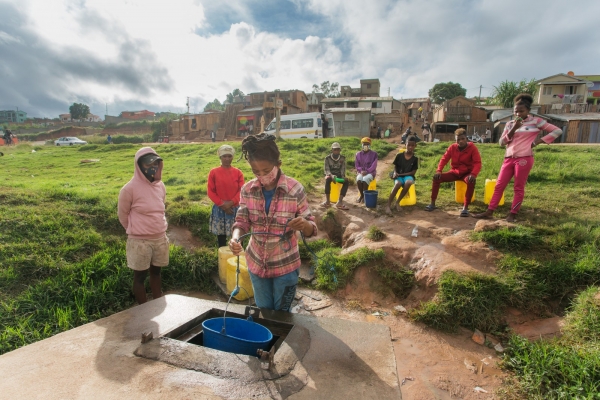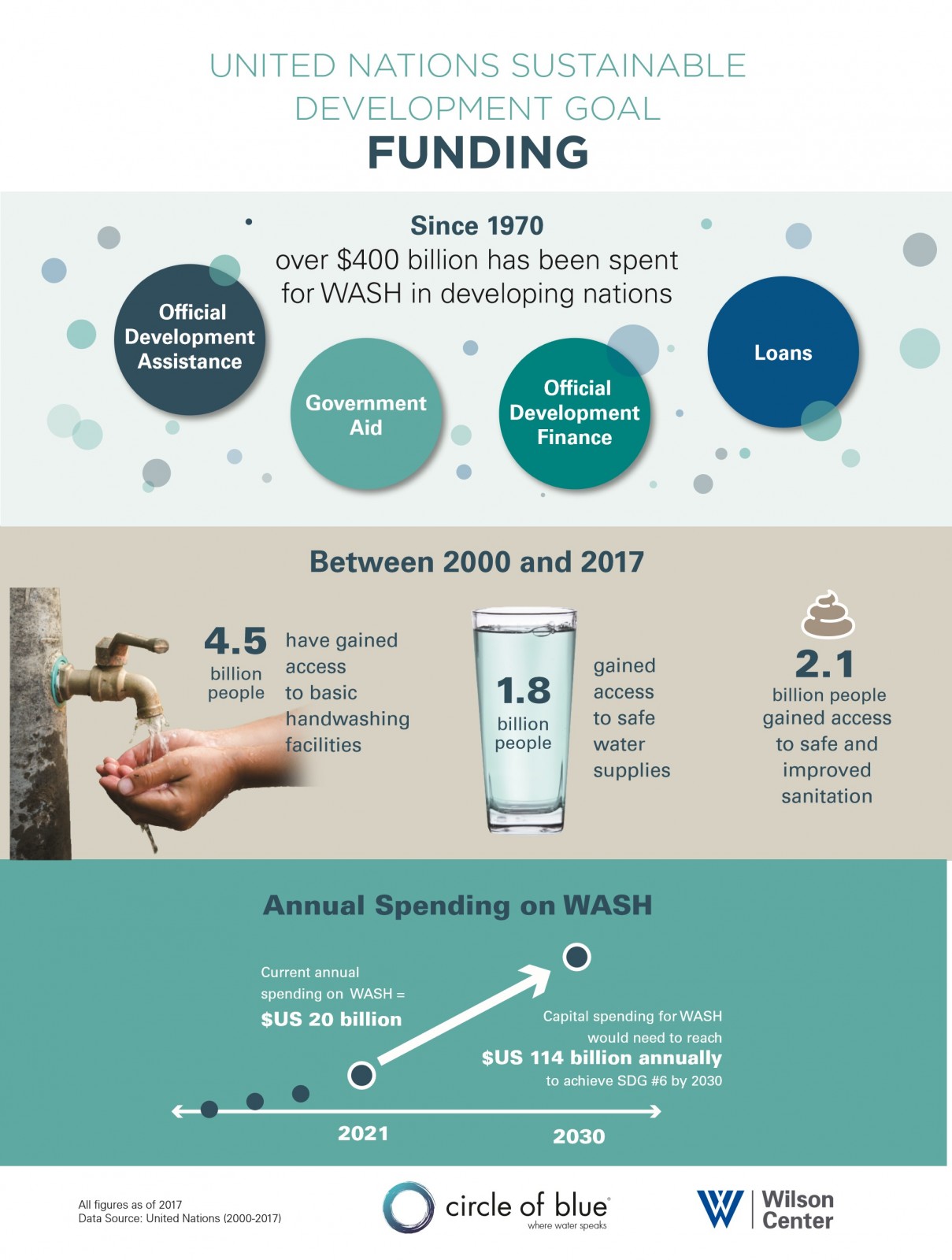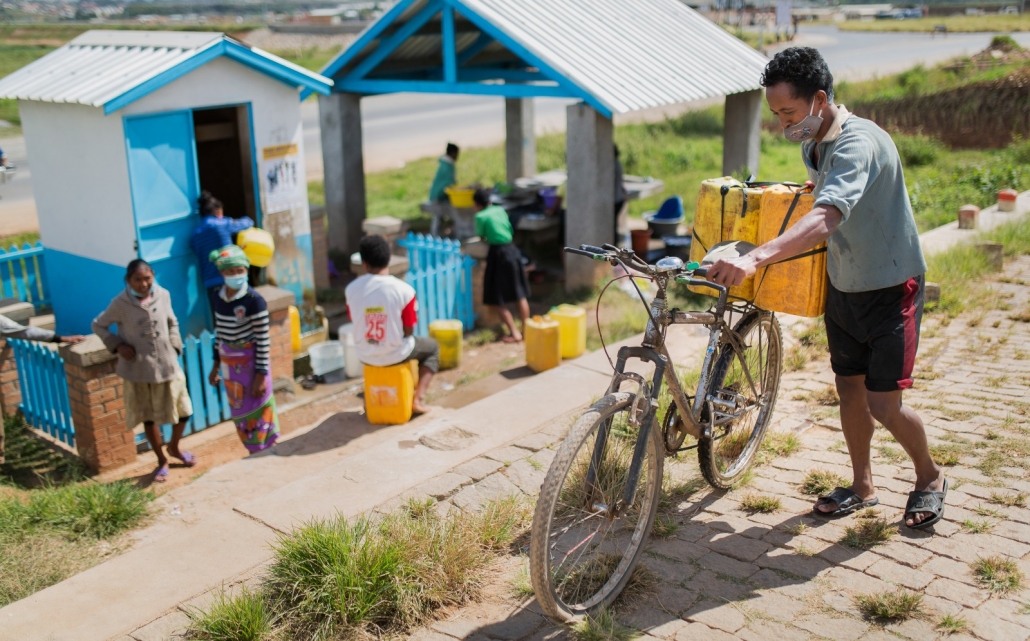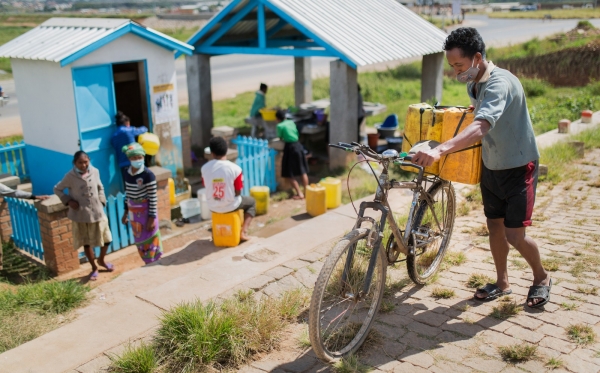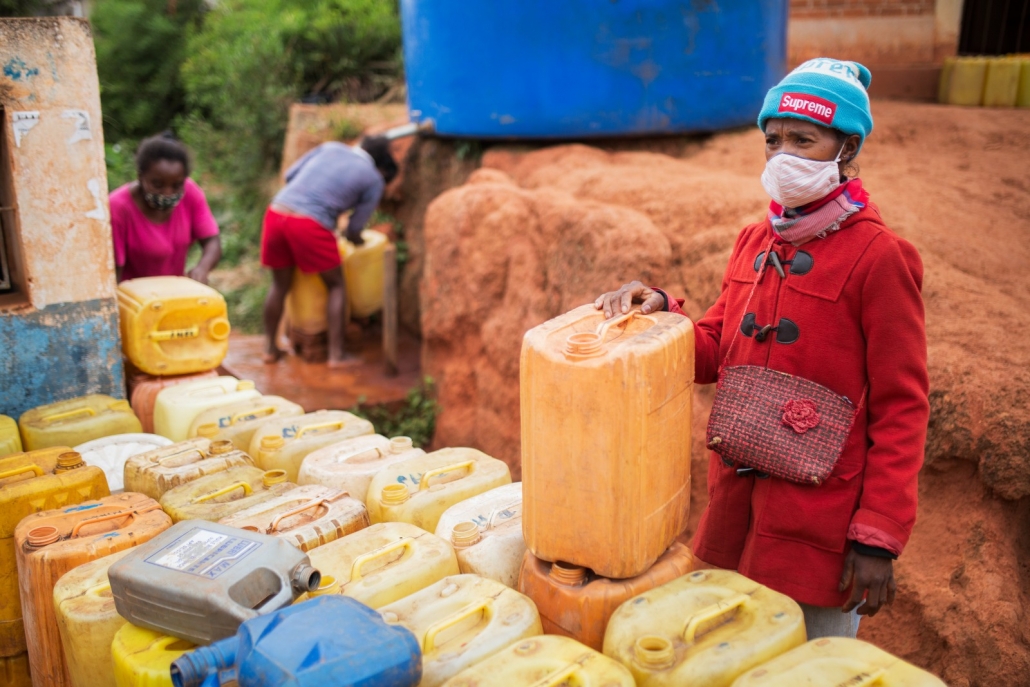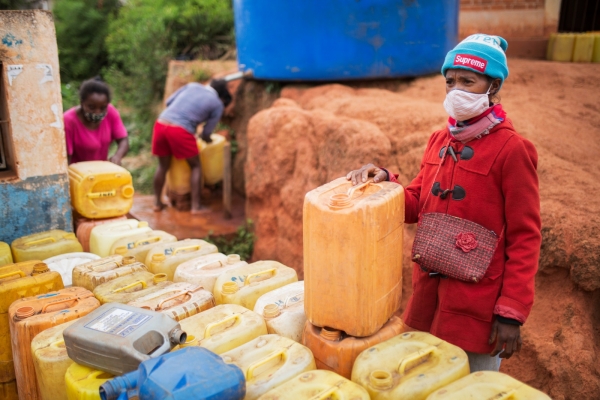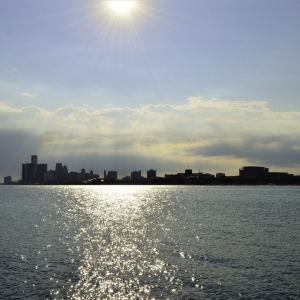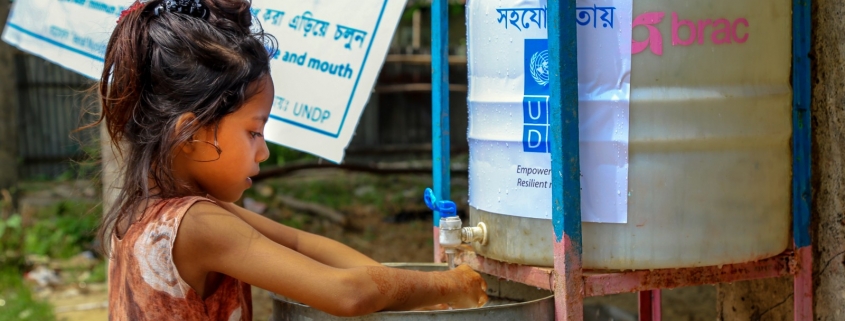 https://www.circleofblue.org/wp-content/uploads/2021/04/Credit-UNDP-Bangladesh-2-Edit.jpg
1003
1600
Keith Schneider
https://www.circleofblue.org/wp-content/uploads/2018/06/Circle-of-Blue-Water-Speaks-600x139.png
Keith Schneider2021-04-27 09:11:412021-11-29 21:07:20Innovation in Financing Brightens WASH Galaxy
https://www.circleofblue.org/wp-content/uploads/2021/04/Credit-UNDP-Bangladesh-2-Edit.jpg
1003
1600
Keith Schneider
https://www.circleofblue.org/wp-content/uploads/2018/06/Circle-of-Blue-Water-Speaks-600x139.png
Keith Schneider2021-04-27 09:11:412021-11-29 21:07:20Innovation in Financing Brightens WASH GalaxyPandemic Brings WASH To Rare Inflection Point
Despite fears of collapse, water, sanitation, and hygiene draw closer to epic goal
This article, the first in a series on the global status of universal access to water, sanitation, and hygiene, is produced through a collaboration between Circle of Blue and the Wilson Center, with support from The Hilton Foundation. This independent journalism does not reflect the views of the Conrad N. Hilton Foundation. Read the second and third articles here.
Key Takeaways
- The WASH world is at a rare inflection point. Government agencies, academic departments, foundations, investors, consultancies and non-profit organizations have spent 50 years and more than US $400 billion to improve water, sanitation and hygiene (WASH) for billions of people in the developing world.
- Social enterprises like FundiFix and Sanergy are setting new standards of operation and durability for water and sanitation in Africa.
- Eighty-eight percent of the world’s people had access to safe water, according to a 2017 global assessment of water, sanitation, and hygiene published by JMP, the research and statistics group formed by UNICEF and the World Health Organization.
By Keith Schneider, Circle of Blue – April 20, 2021
Until 2016, the agrarian residents of east Kenya’s Kitui county had never encountered a water quality monitor like Mary Musenya. Wearing a bright blue company jersey and furnished with sample bottles and plastic trays, the young Kenyan is a water safety officer for FundiFix, a tiny rural water supply service company. She is one of 20 staff who manage 130 pumps, plus pipes and water tanks that serve 82,000 people across a 1,000 square-mile service area in Kitui and Kwale counties.
Musenya’s task is to assess levels of bacteria in water samples drawn from hand and solar-powered pumps. “Managers of the water users have limited knowledge about the water quality,” she says in a video produced by FundiFix. “We explain to them the water has contamination from E. coli bacteria. We advise them of the various measures they need to take to protect their sources.”
About 100 miles east, where more than half of Nairobi’s 4.5 million residents live in tangled informal settlements, another young Kenyan, Sheila Kibuthu, documents the progress her company, Sanergy, is making to build a circular economy around biological wastes. Sanergy collects and recycles 12,000 tons of human, restaurant and market wastes a year into animal feed, compost and biofuels. As Sanergy’s communications director, Kibuthu produces the text and video that show how the 12-year-old company manages 3,500 public toilets used by more than 130,000 people a day, and oversees a state-of-the-art waste recycling facility that is among the largest in Africa.
In January, Kibuthu helped write the formal announcement that AXA IM Alts—a unit of the French insurance company that controls $160 billion in assets—is investing in scaling up one of the most ambitious plans ever proposed for sanitation in the developing world. It was the latest display of global interest in the company. “Sanergy has the goal of processing 1 million tons of waste per year by 2026,” she wrote, “and aims to operate in at least 10 cities” across Africa and Asia.
Though they don’t know each other, Musenya and Kibuthu are part of a new development in Kenya. They are making careers in two companies that are setting new standards of operation and durability for water and sanitation in Africa, attracting uncommon attention and plaudits around the world.
A Humanitarian Ideal Within Reach
Circle of Blue encountered FundiFix and Sanergy while exploring frontline trends in finance and services that are drawing mankind closer to a surpassing humanitarian ideal: Clean water to drink. A safe place to wash. A dignified toilet. For everybody on Earth. Our partner in this project, funded by the Conrad N. Hilton Foundation, is the Wilson Center, a Washington-based think tank and policy center, and a collaborator since 2010.
Circle of Blue comes to the project with deep understanding of the impediments to safe sanitation and clean water. We’ve reported on Durban’s informal settlements, Chennai’s immense bottled water sector and Lima’s trucked water program. We’ve studied Delhi’s teeming slums, Cape Town’s informal settlements and its depleted reservoirs.
This is our first exploration of the global community that aims to end water and sanitation deficits in those and other places around the world. Government agencies, academic departments, foundations, investors, consultancies and non-profit organizations have spent 50 years and more than US$400 billion to improve water, sanitation and hygiene (so-called WASH) for billions of people in the developing world. That level of spending is producing results. Between 2000 and 2017, 1.8 billion people gained access to safe water supplies and some 2.1 billion to safe and improved sanitation, according to the United Nations.
After interviewing more than 40 thought leaders and frontline professionals on five continents, Circle of Blue found that the WASH world is at a rare inflection point. At the risk of oversimplifying 50 years of theory and practice, pursuing WASH outcomes in the 20th century essentially meant that outside funders spent a fortune on water supply and sanitation equipment in developing regions. Local authorities accepted the hardware and technical support to establish services that were generally very low cost or free to users. But the water stopped when loan agreements and grant funding ended. Though progress was made, a lot of pumps, pipes and toilets failed.
Frustrated by the intractable impediments—many of which were of their own making—funders and practitioners have spent much of the last decade tossing aside those clumsy approaches that, while generous in their application, were based in altruism. They revealed unrealistic expectations of what providers could—and could not—do.
They’ve been replaced by disciplined business strategies and systems management that stress earned revenue streams, data collection and analysis, and measurable performance. The new tools helped the WASH world gain much keener understanding of the various components of their ecosystem (finance, governance, installation, management, operations, oversight) and how each influenced the others. In essence, the WASH community embraced a fresh set of approaches that simplified the complexity of what they were after.
“The WASH sector moved on,” said Laura Brunson, deputy director of the Millennium Water Alliance, a 19-year-old learning and advocacy group based in Washington, D.C. “The sector has moved beyond dumping infrastructure into the ground. There is more focus now on other critical factors such as accountability, incentives, monitoring and policies.”
Sustainable Development Goal Spotlights WASH
In 2015, the United Nations added its weight to this global enterprise. It established universal access to water, sanitation and hygiene as aspirational “sustainable development goals (SDGs).” The United Nations, which set 2030 as the deadline to meet the goals, also was keenly interested in making sure that once safe water supply and sanitation infrastructure was installed it could be sustained over time. SDG 6, which aims to ensure water and sanitation for all, clarified the community’s prime objective. In the six years since, WASH projects have become more numerous, dynamic and effective around the world.
The COVID-19 pandemic did not sidetrack that trend. The infections hurt incomes and dramatically cut utility bill collection across the developing world. The virus raised awareness of health care facilities with inadequate hygiene, the nearly 600 million children who attend schools that lack safe toilets, and 800 million students without wash basins. But as an impediment to universal access to WASH, the pandemic was not nearly as significant as population growth, rural migration to urban slums and insufficient financing.
In interviews with Circle of Blue, many WASH thought leaders said that meeting all the 2030 goals were unlikely. But they also were convinced that universal WASH for water and hygiene was within reach, perhaps by 2030, and for sanitation by 2040.
“Universal access to safe water, sanitation and hygiene is achievable when we truly coalesce around the new thinking,” said Lesley Pories, manager of Sector Strategy at Water.org, a Kansas City-based non-profit water and sanitation finance organization. “The 2015 WASH targets were ambitious by design and intent. They galvanized what was a very insular and fragmented sector to start thinking differently and take steps towards collaboration. That is huge.”
Though they are but two schooners afloat on the sprawling sea of WASH, FundiFix and Sanergy are proving out the new approach. Both companies emerged from university research projects. Both are directed by managers who earned advanced degrees from Massachusetts Institute of Technology (MIT) and Oxford University. The skills and knowledge learned at two of the world’s premier universities have literally been applied to Kenya’s bushland and slums.
Along with top-flight managers, trained professional staffs, and access to the latest technology, the two companies mix three more essential ingredients into the contemporary WASH formula that is working around the world.
Two Companies Achieving Results
First, FundiFix and Sanergy operate as reliable revenue-generating businesses. Second, both companies developed consistent sources of financing. FundiFix developed a Water Services Maintenance Trust Fund; Sanergy is attracting impact investors. Both assure that their staffs can do their work in some of the toughest markets on the planet. Third, both operating models can be replicated across the developing world where more than 1 billion people do not have access to safe drinking water, 2 billion do not have safe or improved sanitation, and nearly 700 million people defecate in the open.
One of the many reasons for their success is that the two companies are rigorous in defining and pursuing their business strategies. “We have focused priorities and we provide performance-based service,” said Cliff Nyaga, the FundiFix director and founder. Nyaga, who earned an advanced degree in policy and management, participated in an Oxford University research program in East Kenya in 2014 when he developed the idea for the business. “We provide professional repair and maintenance service for rural water points,” he said. “We ensure service reliability. We don’t build. We only work with existing systems and exclusively in rural areas. We market to communities and schools and health facilities. We guarantee that any breakdown will be repaired in three to five days.”
FundiFix was among the top performers when compared with six other new rural water maintenance companies in Africa, according to a 2019 study commissioned by U.S. Agency for International Development (USAID). Nearly 90 percent of the pumps and other equipment it maintained—much of it installed decades ago—were still operating. A top thought leader in the WASH world, Harold Lockwood, who led the study, was impressed by the digital, cloud-based smart monitoring and remote sensing technology that FundiFix installed in its maintenance system. “Adopting maintenance approaches, particularly those based on guaranteed service provision, results in significant improvements in functionality rates,” Lockwood wrote.
“With roughly one in four rural water points in most of Kenya not working at any given time, this is significant improvement,” added Cliff Nyaga of FundiFix. “It has potential to change livelihoods for millions of Kenyans.”
The same can be said for Sanergy, which devotes itself to what it calls a “full value chain approach.” Founded in 2009 and directed by three MIT graduates, David Auerbach, Lindsay Stradley, and Ani Vallabhaneni, Sanergy also grew out of a university research assignment. It designs, builds, and installs concrete toilets with tile floors. Some 130,000 people use them in 11 Nairobi informal settlements, and in Kisumu, a Lake Victoria city 220 miles west. The toilets are leased to customers for $8.50 a month, which pays for regular waste removal. Fecal and urine wastes drain to the toilet’s separate, small plastic tanks that are easily loaded onto carts and trucks and transported to the company’s recycling plant. The company employs 300 people. Some also collect organic waste from kitchens, farms and markets to recycle into fertilizer and animal feed for additional revenue.
“Sanergy has developed a cyclic model in which the company creates value for different stakeholders at each step of the cycle,” wrote Kibuthu in a 2020 article. “The waste and burden of the ones become the resource and opportunity of the others.”
After 10 years of work, Sanergy serves about 6 percent of Nairobi’s 2.5 million residents living in its slums, which is a measure of both the company’s progress and the scale of the challenge. “What Sanergy has been able to accomplish, nobody has managed before them, and it is phenomenal,” said Jan Willem Rosenboom, the senior WASH program officer at the Bill & Melinda Gates Foundation. “But that’s also the point a little. The most successful company out there will need to grow by about a factor of 15 or 20 if they were to help Nairobi get a handle on sanitation in its slums. That requires government contracts, more land for treatment plants and growing markets for the products created from the waste. And that’s one city in Kenya. We need to find solutions, business models, capacity, and financing that supports the poor so these solutions can reach a million or more customers, without taking another 12 years.”
Other Performing Companies
Citizens of the developed world may find it difficult to fully grasp the magnitude of what FundiFix and Sanergy are achieving. Across North America, Europe, Australia, and nations of the Asian Pacific Rim; faucets, toilets and sinks are now within easy reach nearly everywhere.
But across almost all of Kenya and the rest of sub-Saharan Africa, successful revenue-generating rural water infrastructure maintenance companies like FundiFix and revenue-generating waste managers and recyclers like Sanergy are uncommon. For that reason, and many others—like how they continuously innovate, and their unyielding ambition—both companies are regularly featured in international conferences and receive praise from the likes of the United Nations, USAID, and the Bill & Melinda Gates Foundation.
Significantly, though FundiFix and Sanergy are distinctive, they are not unique. Other pioneering water, sanitation and hygiene projects operating around the world pursue similar WASH goals. Here is a sampling from Africa:
- In Uganda, Whave Solutions, a rural water maintenance enterprise formed in 2011, works with local governments and the Ministry of Water and Environment to keep water pumps and other equipment operating for 160,000 people in 500 communities. The company employs over 60 people and is financed by “preventative maintenance service agreements” with local governments. Water customers and government foot the bill. Before the utility began its work, various audits found that half of all water supply equipment was broken or abandoned. In 2019, according to the utility’s most recent operating audit, well over 90 percent of the equipment now works.
- In Mali, Odial Solutions, a unit of Vergnet, a French renewable energy generator, directed its UDUMA water supply maintenance company to repair, maintain, and modernize 1,400 water pumps to provide drinking water to 264,000 people in rural regions. UDUMA operates through 15-year contracts with 11 municipalities signed in 2018. UDUMA’s work will eventually expand to serve 560,000 people, according to the Ministry of Energy and Water, which helped broker the US$6 million project. The company aims to prove that rural water services can be supported entirely by user revenue.
- In Mauritania, CDS, a private company, provides water and electricity services in three rural areas serving around 20,000 people. The CDS business strategy is to bundle electrical energy production with maintenance service for water pumps, wells, pipes and other infrastructure. Sidi Khalifou, a Mauritanian engineer and entrepreneur who trained in France, developed the idea and put it into effect in 2007. CDS operates and maintains the infrastructure and manages invoicing and bill collection from customers across regions of Mauritania where few people have electricity or easy access to clean water. CDS attracted initial infrastructure investment from the national government. The company now offers affordable pricing to customers and also has replaced its diesel-fueled generators with solar power.
- In Ghana, the Dutch waste recycling company, Safisana, opened a comprehensive sanitation project in Ashaiman, a city of 250,000 residents. The company collects waste from improved public toilets and recycles it into revenue-producing products, including biogas, electrical power, and compost in a new plant. Safisana’s goal is to cover its operating costs and produce a small profit from product sales. The African Development Bank, Directorate-General for International Cooperation and several other funders financed the capital costs to establish the collection systems and plant construction. The city’s government and the national ministries of energy and agriculture are among other prominent partners.
- In 2015, some of the biggest industrial players in the sanitation sector—Unilever, Firmenich, Kimberly-Clark, and LIXIL—formed the Toilet Board Coalition to accelerate the invention and adoption of products and practices for a “sanitation economy.” The idea is to deliver products and services that are sources of revenue and help meet the goal of universal access to safe sanitation. Among the coalition’s recent achievements is an agreement in October 2020 between USAID and LIXIL, the Japanese materials manufacturer, to make its Sato-brand latrines and products available in 11 countries across sub-Saharan Africa and Asia. One of the innovations is a plastic pan that fits into the drain of a pit toilet. Developed in 2012 with funding from the Bill & Melinda Gates Foundation, the SaTo pan (safe toilet) has a hydraulic trap door that opens for use, and closes immediately after, making the toilet easier to clean, and limiting odors and insects.
How to Measure Results
The WASH world measures its progress in two dimensions. Practitioners seeking funds from governments, development banks, foundations and donors emphasize what’s not being accomplished. In contrast, funders generally emphasize how much they’ve achieved. In 2015, for instance, when the SDGs were established, big institutions hailed the United Nations’ announcement that 9 out of 10 people worldwide had access to an improved drinking water source, though not all of it “was necessarily safe to drink.” Grantee organizations focused on another detail from the U.N. report: “2.4 billion people were still using unimproved sanitation facilities, of which a third practiced open defecation.”
The WASH objective is to close that gap. Eighty-eight percent of the world’s people had access to safe water, according to a 2017 global assessment of water, sanitation, and hygiene published by JMP, the research and statistics group formed by UNICEF and the World Health Organization. Yet another 12 percent, or 1 billion people, were drinking and bathing in contaminated water. The same assessment said the situation was worse for sanitation. Twenty-six percent or 2 billion people, did their business in repulsive pits and latrines or out in the open. As for hygiene, 3 billion people did not have hand-washing facilities in their homes.
In 2011, Harold Lockwood and Stef Smits wrote an era-changing book for IRC that called for a dramatic change to the WASH sector’s strategy and anticipated the development of new models to accelerate progress. In Supporting Rural Water Supply, Moving Towards a Service Delivery Approach, the two authors called for far greater support for community-managed water projects. “It was almost like heresy,” said Lockwood in an interview. “We said, ‘Don’t break with the community model.’ But you want to professionalize them with proper services. You need to support them with professional providers instead of relying on a bunch of volunteers.”
“It was a leap forward,” he added. “You can’t just provide a bit of hardware and think that the work is done. We said, ‘Stop thinking about the hardware. Focus on the service. Who delivers it? Who gets it? Who pays for it? Is it sustainable? Everything flows out from there.’”
The question the WASH world is answering with FundiFix and Sanergy is not just if the Kenya-based projects represent durable models for providing safe services. It looks as if they do.
More important is whether such models for water supply and sanitation that are emerging around the world can be replicated with sufficient speed and scale to serve the billions of people that need them. And then, can they keep pace with the mammoth wave of population growth and urbanization that are the two most significant impediments to universal access to WASH?
The essential challenge today facing WASH funders and practitioners is the same as it was in 1977 when the United Nations held the first global Water Conference: How to encourage “a concerted effort by countries and the international community to ensure a reliable drinking water supply and provide basic sanitary facilities to all urban and rural communities.”
“We have much more mature conversations now about how we conduct our work,” said Stef Smits, senior program officer at IRC. “Our thinking is around what really is needed to build a system for delivery. It’s like building a health care system. Or building an education system. We’re building WASH systems that work.”
Thought leaders like Smits and Lockwood now distill their work into two words. “Everyone, forever.” The phrase defines the new logic in a field obscured by decades of illogic. In recent years the fog has cleared and the more certain path appears to actually lead to universal access to clean water, safe sanitation and hygiene.
Featured Image:
Fenosoa, like many who live in the Amoron’Akona neighborhood, works by supplying dozens of households and businesses with well water. Location: Amoron ‘Akona, Antananarivo, Madagascar Photo : ©Tsilavo Rapiera – www.tsilavorapiera.com / www.arikamedia.com
Read the full series
 https://www.circleofblue.org/wp-content/uploads/2021/04/Credit-UNDP-Bangladesh-2-Edit.jpg
1003
1600
Keith Schneider
https://www.circleofblue.org/wp-content/uploads/2018/06/Circle-of-Blue-Water-Speaks-600x139.png
Keith Schneider2021-04-27 09:11:412021-11-29 21:07:20Innovation in Financing Brightens WASH Galaxy
https://www.circleofblue.org/wp-content/uploads/2021/04/Credit-UNDP-Bangladesh-2-Edit.jpg
1003
1600
Keith Schneider
https://www.circleofblue.org/wp-content/uploads/2018/06/Circle-of-Blue-Water-Speaks-600x139.png
Keith Schneider2021-04-27 09:11:412021-11-29 21:07:20Innovation in Financing Brightens WASH Galaxy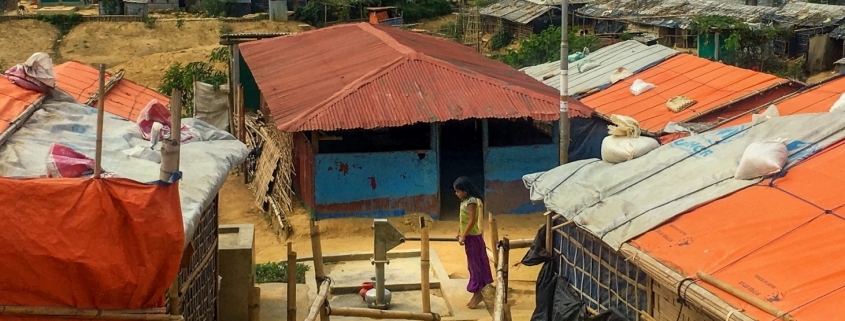 https://www.circleofblue.org/wp-content/uploads/2021/05/CoxesBizaar.jpg
780
1462
Keith Schneider
https://www.circleofblue.org/wp-content/uploads/2018/06/Circle-of-Blue-Water-Speaks-600x139.png
Keith Schneider2021-05-04 01:45:502021-11-29 21:07:10Universal WASH Gains Traction Even as Hand Pumps Lose Ground
https://www.circleofblue.org/wp-content/uploads/2021/05/CoxesBizaar.jpg
780
1462
Keith Schneider
https://www.circleofblue.org/wp-content/uploads/2018/06/Circle-of-Blue-Water-Speaks-600x139.png
Keith Schneider2021-05-04 01:45:502021-11-29 21:07:10Universal WASH Gains Traction Even as Hand Pumps Lose GroundCircle of Blue’s senior editor and chief correspondent based in Traverse City, Michigan. He has reported on the contest for energy, food, and water in the era of climate change from six continents. Contact
Keith Schneider
Related
© 2025 Circle of Blue – all rights reserved
Terms of Service | Privacy Policy

